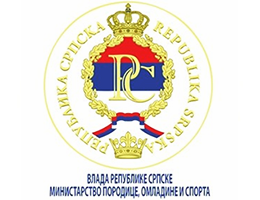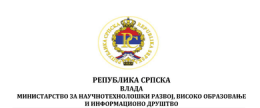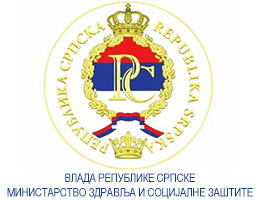Promjene funkcionalnih sposobnosti žena pod uticajem rekreativnog plivanja
Volume 6, Issue 1 (2016)
Volume 6, Issue 1 (2016)
Promjene funkcionalnih sposobnosti žena pod uticajem rekreativnog plivanja
Apstrakt:
Istraživanje je imalo za cilj utvrditi promjene funkcionalnih sposobnosti žena pod uticajem rekreativnog plivanja. Populacija iz koje je izvučen uzorak je populacija zdravih žena, hronološke starosti od 35 do 45 godina, kod kojih dominira sedentaran način života. Procjena funkcionalne sposobnosti je testirana sa sljedećim varijablama: vitalni kapacitet, frekvencija srca u miru, radni puls, sistolni arterijski krvni pritisak, dijastolni krvni pritisak i relativna potrošnja kiseonika. Za sve rezultate izračunati su osnovni parametri deskriptivne statistike, a za utvrđivanje razlika između inicijalnog i finalnog mjerenja primjenjen je t-test. Rezultati istraživanja su pokazali da je nakon tromjesečne primjene rekreativnog plivanja došlo do statistički značajnih promjena vitalnog kapaciteteta (p = 0,000), frekvencije srca u miru (p = 0,000) i relativne potrošnje kiseonika (p = 0,000). Istraživanjem je ustanovljeno da program rekreativnog plivanja kod sedentarnih žena srednjih godina može efikasno djelovati na promjene funkcionalnih sposobnosti.
Ključne riječi:
rekreacija, rekreativno plivanje, funkcionalne sposobnosti
Puni tekst:
Reference:
- Barbosa, T. M., Marinho, D. A., Reis, V. M., Silva, A. J., & Bragada, J. A. (2009). Physiological assessment of head-out aquatic exercises in healthy subjects: a qualitative review. Journal of Sports Science and Medicine, 179-189.
- Berger, B. G., & Owen, D. R. (1983). Mood Alteration with Swimming-Swimmers Really Do” Feel Better”. Psychosomatic medicine, 45(5), 425-433.
- Colado, J. C., Triplett, N. T., Tella, V., Saucedo, P., & Abellán, J. (2009). Effects of aquatic resistance training on health and fitness in postmenopausal women. European journal of applied physiology, 106(1), 113-122.
- Cox, K. L., Burke, V., Beilin, L. J., Derbyshire, A. J., Grove, J. R., Blanksby, B. A., & Puddey, I. B. (2008). Short and long-term adherence to swimming and walking programs in older women—the Sedentary Women Exercise Adherence Trial (SWEAT 2). Preventive medicine, 46(6), 511-517.
- Costill, D., Maglischo, E., & Richardson, A. (1992). Swimming: Handbook of Sports Medicine and Science Swimming. IOC Medical Commission Publications Advisory Committee.
- Fletcher, G. F., Balady, G., Blair, S. N., Blumenthal, J., Caspersen, C., Chaitman, B., ... & Pollock, M. L. (1996). Statement on exercise: Benefits and recommendations for physical activity programs for all Americans a statement for health professionals by the committee on exercise and cardiac rehabilitation of the council on clinical cardiology, American Heart Association. Circulation, 94(4), 857-862.
- Ferretti, E., De Angelis, S., Donati, G., & Torre, M. (2014). Fatal and non-fatal unintentional drownings in swimming pools in Italy: Epidemiological data derived from the public press in 2008–2012. Microchemical journal, 113, 64-68.
- Green, J. S. (1989). Effects of a Water Aerobics Program on the Blood Pressure, Percentage of Body Fat, Weight, and Resting Pulse Rate of Senior Citizens. Journal of Applied Gerontology, 8(1), 132-138.
- Khosravi, M., Tayebi, S. M., & Safari, H. (2013). Single and concurrent effects of endurance and resistance training on pulmonary function. Iranian journal of basic medical sciences, 16(4), 628.
- Lin, S. Y., Davey, R. C., & Cochrane, T. (2004). Community rehabilitation for older adults with osteoarthritis of the lower limb: a controlled clinical trial. Clinical Rehabilitation, 18(1), 92-101.
- Malacko, J., & Popović, D. (2001). Methodology of kinesiological and anthropological research. The third edition. Leposavić: Faculty of Physical Education, University of Priština.
- Martin, W. H., Montgomery, J. A. M. E. S., Snell, P. G., Corbett, J. R., Sokolov, J. J., Buckey, J. C., ... & Blomqvist, C. G. (1987). Cardiovascular adaptations to intense swim training in sedentary middle-aged men and women. Circulation, 75(2), 323-330.
- Mohr, M., Nordsborg, N. B., Lindenskov, A., Steinholm, H., Nielsen, H. P., Mortensen, J., ... & Krustrup, P. (2014). High-intensity intermittent swimming improves cardiovascular health status for women with mild hypertension. BioMed research international, 2014.
- Mikalački, M. (2005). Sports Recreation. Novi Sad: Faculty of Physical Education. [In Serbian]
- Minor, M. A., Webel, R. R., Kay, D. R., Hewett, J. E., & Anderson, S. K. (1989). Efficacy of physical conditioning exercise in patients with rheumatoid arthritis and osteoarthritis. Arthritis & Rheumatism, 32(11), 1396-1405.
- Nualnim, N., Parkhurst, K., Dhindsa, M., Tarumi, T., Vavrek, J., & Tanaka, H. (2012). Effects of swimming training on blood pressure and vascular function in adults> 50 years of age. The American journal of cardiology, 109(7), 1005-1010.
- Oja, P., & Tuxworth, B. (Eds.). (1995). Eurofit for adults: Assessment of health-related fitness. Council of Europe.
- Saavedra, J. M., De La Cruz, E., Escalante, Y., & Rodríguez, F. A. (2007). Influence of a medium-impact aquaerobic program on health-related quality of life and fitness level in healthy adult females. Journal of Sports Medicine and Physical Fitness, 47(4), 468.
- Schmid, J. P., Noveanu, M., Morger, C., Gaillet, R., Capoferri, M., Anderegg, M., & Saner, H. (2007). Influence of water immersion, water gymnastics and swimming on cardiac output in patients with heart failure. Heart, 93(6), 722-727.






